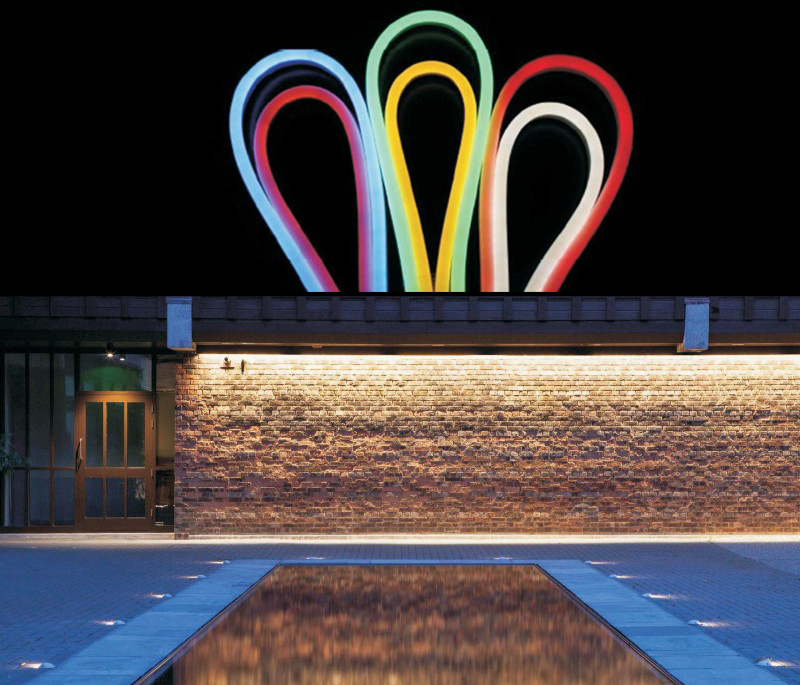How to Choose the Right LED Strip Light
LED strip lights have become a popular choice for both residential and commercial lighting applications due to their versatility, energy efficiency, and aesthetic appeal. However, with a myriad of options available on the market, selecting the right LED strip light for your needs can be daunting. This article will guide you through the essential factors to consider when choosing the perfect LED strip light.
1. Brightness
Brightness is one of the most crucial factors to consider when choosing LED strip lights. The brightness of an LED strip light is measured in lumens per meter (lm/m). Different applications require different levels of brightness:
- Accent Lighting: For accent or decorative lighting, a lower brightness of around 150-300 lm/m is typically sufficient.
- Task Lighting: For task lighting, such as under-cabinet lighting in kitchens, a medium brightness of 400-800 lm/m is recommended.
- General Lighting: For general room lighting, higher brightness levels of 800-1,500 lm/m might be necessary.
Always check the lumen rating on the product specifications to ensure you are getting the right level of brightness for your application.
2. Color Temperature
Color temperature is measured in Kelvin (K) and determines the color appearance of the light. LED strip lights are available in various color temperatures, each suitable for different environments and moods:
- Warm White (2700K-3000K): Creates a cozy, inviting atmosphere, ideal for living rooms and bedrooms.
- Neutral White (3500K-4500K): Provides a balanced light, suitable for kitchens, bathrooms, and workspaces.
- Cool White (5000K-6500K): Emits a bright, crisp light, perfect for task-oriented spaces like garages and offices.
Consider the ambiance you want to create and select the color temperature accordingly.
3. Color Rendering Index (CRI)
The Color Rendering Index (CRI) measures the ability of a light source to accurately reproduce the colors of objects compared to natural light. A higher CRI (above 80) indicates better color rendering. For most residential and commercial applications, a CRI of 80 or higher is recommended to ensure colors appear true and vibrant under the LED light.
4. Length and Flexibility
LED strip lights come in various lengths and can often be cut to size to fit your specific requirements. Check the product specifications for the maximum length per power supply and the cutting intervals. Ensure that the strip light can be cut and reconnected if needed, and verify the manufacturer's guidelines on how to do this correctly.
Flexibility is another important consideration, especially if you need to install the strip light around corners or on curved surfaces. Ensure the strip light you choose is flexible enough to accommodate your installation needs.
5. Power and Voltage
Related links:What is a Wall Washer?
How Do Integrated Solar Street Lights Work?
10 Questions You Should Know about LED Smart Home Device Vendors
Top Tips to Choose a Bollard & Lawn Light Vendor
In-ground Light Exporter Trends for 2024
How to Choose Modern Pendant Light Bulk?
How to Choose the Best Tree&Pillar Light for Sale?
LED strip lights are available in different voltage options, typically 12V or 24V. The voltage you choose will depend on the length of the strip and the total power consumption. Lower voltage (12V) strips are suitable for shorter lengths, while higher voltage (24V) strips are better for longer runs to minimize voltage drop.
Calculate the total wattage required by multiplying the wattage per meter by the total length of the strip. Ensure that your power supply can handle the total wattage plus a safety margin of around 20% to avoid overloading.

6. Waterproofing and Durability
If you plan to use the LED strip lights outdoors or in areas exposed to moisture, such as bathrooms or kitchens, look for strips with an appropriate IP (Ingress Protection) rating:
- IP20: Suitable for indoor use in dry areas.
- IP65: Water-resistant, suitable for outdoor use and areas with occasional splashes.
- IP68: Waterproof, suitable for submersion in water and harsh outdoor conditions.
Choose the right IP rating based on the installation environment to ensure longevity and performance.
7. Control Options
Modern LED strip lights offer various control options, including dimming, color changing, and programmable settings. Depending on your needs, you might want to consider:
- Basic Dimmer: Simple on/off and dimming functionality.
- Remote Control: Allows you to change brightness and colors from a distance.
- Smart Control: Integrates with home automation systems and can be controlled via smartphone apps or voice assistants like Amazon Alexa and Google Assistant.
Consider the level of control you need and choose a strip light with the appropriate features.
8. Installation Accessories
Ensure you have all necessary installation accessories, such as connectors, mounting clips, and power supplies. Some LED strip lights come with these accessories included, while others require you to purchase them separately. Check the product details and make sure you have everything you need for a smooth installation process.
Conclusion
Choosing the right LED strip light involves considering several factors, including brightness, color temperature, CRI, length, flexibility, power, voltage, waterproofing, control options, and installation accessories. By understanding your specific needs and carefully evaluating these factors, you can select an LED strip light that not only meets your requirements but also enhances the ambiance and functionality of your space.
Tree Light vs. Pillar Light: Which Fits Your Space?
waterproof ceiling lights
LED Outdoor Bollard Lights Supplier China
Surface Facade Light for Sale: Top 5 Options to Brighten Your Space
What Are the Benefits of Magnetic Track Lights?
How to Choose Wholesale Luxury Modern Floor Lamps?
Top LED Buried Uplight Round Trends to Watch in 2025


Comments
0